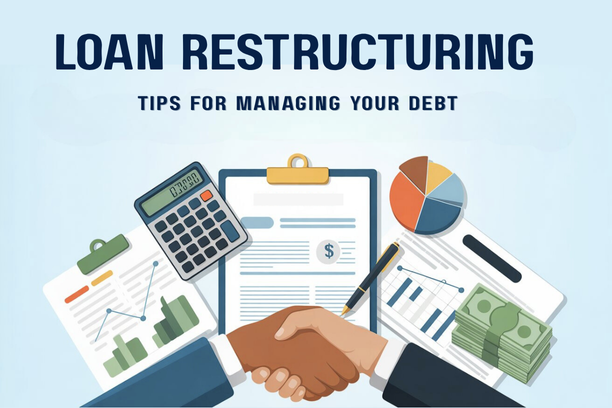For many Filipinos, buying a piece of land is the ultimate long-term investment. It’s a tangible asset that appreciates in value, offers the flexibility to build a dream home, or can be passed down as a family heirloom. However, financing a land purchase is a unique challenge that differs significantly from getting a traditional home loan. The absence of an existing structure on the land makes it a higher-risk asset for lenders, which in turn affects the loan-to-value ratio, interest rates, and loan terms. This comprehensive guide serves as a guide to getting a loan to purchase land, detailing the best financing options available from banks and the Pag-IBIG Fund, providing a step-by-step checklist, and offering key insights to help you make an informed and financially sound decision.
1. The Unique Nature of a Land Loan
Before you start looking for a loan, you must first understand why financing a land purchase is treated differently from financing a house and lot. This distinction is crucial to preparing a successful loan application.
How a Land Loan Differs from a Home Loan
The primary difference between a land loan and a home loan lies in the nature of the collateral. When you get a home loan, the collateral is a finished, appreciating asset (the house and lot) that the bank can easily appraise and sell in case of a default. A bare lot, however, is considered a less secure form of collateral.

- Lower Loan-to-Value (LTV) Ratio: Because of the higher risk, lenders are more cautious. While a traditional home loan may have an LTV ratio of 80% to 90%, a land loan typically has a lower LTV ratio, often ranging from 50% to 70% of the lot’s appraised value. This means you will need a larger down payment, often 30% to 50% of the purchase price, which is a significant upfront financial commitment.
- Shorter Loan Term: Land loans generally have a shorter repayment term compared to a home loan. While a home loan can be stretched to 30 years, a land loan is often limited to 5, 10, or, in some cases, a maximum of 15 years. This results in higher monthly amortization payments, so your income and cash flow must be sufficient to cover these accelerated payments.
- Higher Interest Rates: Due to the higher risk and shorter term, land loans may sometimes come with slightly higher interest rates than home loans. This is not always the case, but it is a factor to consider when a guide to getting a loan to purchase land is needed.
Key Preparations Before You Apply
A successful land loan application starts long before you submit a form. Proper due diligence on the property and your finances is paramount.
- Verify the Title and Documents: The land you intend to purchase must have a “clean” title. This means the Transfer Certificate of Title (TCT) must be free from any encumbrances or legal disputes. You should also ensure that the tax declaration is up-to-date and that all taxes are paid.
- Determine the Intended Purpose: Lenders will want to know the purpose of your land purchase. Is it for investment, or do you plan to build a residential house on it? If you have a clear plan to build, some banks may offer a more favorable land and construction loan package.
- Location and Zoning: The location and zoning of the land are critical. Lenders prefer to finance land in residential subdivisions or areas with a clear residential zoning classification. It is very difficult to get a loan for agricultural land or land in a remote, undeveloped area.
- Secure a Sufficient Down Payment: Given the lower LTV ratio, you must have a substantial amount of cash ready for the down payment. This should be your top priority before you even approach a lender.
2. Your Best Options for A Guide to Getting a Loan to Purchase Land
In the Philippines, you have two primary options for financing a land purchase: a specialized loan from the Pag-IBIG Fund or a land loan from a commercial bank.
The Pag-IBIG Housing Loan for Residential Lot Purchase
For Pag-IBIG members, the Pag-IBIG Housing Loan is often the most accessible and affordable option. This loan is specifically designed to cover a variety of housing-related needs, including the purchase of a residential lot.
- Affordable Interest Rates: Pag-IBIG’s rates are known to be lower than those of commercial banks. Their subsidized rates make the loan more manageable, especially with the shorter loan term typical for a land purchase.
- Flexible Terms and Conditions: The Pag-IBIG housing loan can be used to finance a residential lot purchase, and the maximum loanable amount is up to PHP 6 million. The loan term can go up to 30 years for a house and lot, but it is often shorter for a lot-only purchase.
- Loan for Lot and Construction: A key feature of the Pag-IBIG housing loan is that you can apply for a loan to purchase a residential lot and, after a period, apply for a separate construction loan to build your house on it. This two-step process is a common approach for those who want to build their home from scratch.
This loan is the ideal choice for Pag-IBIG members who are looking for a reliable, low-cost option to acquire a residential lot.
The Commercial Bank Land Loan
Major commercial banks like BDO, BPI, and Metrobank also offer specialized land loans that provide a great deal of flexibility and can cater to a wider range of needs.
- Higher Loan Amounts: If the land you are purchasing is in a high-value area and requires a loan amount exceeding what Pag-IBIG offers, commercial banks are often willing to lend a larger sum, provided you have a strong financial profile.
- Flexibility and Diverse Products: Banks offer a variety of fixed-rate terms, and they may be more flexible with the loan purpose. Some banks have a dedicated “Lot Loan” product, while others include it in their “Home Loan” product offerings.
- The Land and Construction Combo: A significant advantage of a bank loan is the availability of a combined “Land and Construction Loan.” This two-in-one package simplifies the process by financing both the lot purchase and the subsequent construction of the house under a single loan application. This is ideal if you have a clear plan and a timeline to build immediately after acquiring the land.
These loans are a great option if you have a strong financial profile and require a larger or more comprehensive loan solution.
3. The Application Process: A Comprehensive Checklist
Regardless of whether you choose Pag-IBIG or a commercial bank, the application process for a land loan is distinct and requires specific documents related to the property.

The Essential Checklist for a Land Loan
A successful land loan application requires a comprehensive set of documents that cover both the borrower’s financial capacity and the property’s legal status.
- Borrower Documents:
- Duly accomplished Loan Application Form.
- Two valid government-issued IDs.
- Proof of Income (e.g., ITR, COE, payslips for employed; Audited Financial Statements for self-employed).
- Property Documents:
- Copy of the Transfer Certificate of Title (TCT) of the lot.
- Copy of the Tax Declaration of the land and improvements (if any).
- Subdivision Plan or Vicinity Map.
- Latest Real Property Tax Receipt.
- Appraisal Report of the lot (the bank will usually order this).
Having all these documents organized and ready is a critical step in streamlining your application and getting your land purchase approved.
The Step-by-Step Path to Disbursement
- Get a Pre-qualification: Before you find a lot, you can get a pre-qualification from your chosen lender to know the maximum loan amount you can afford.
- Find a Lot and Reserve It: Once you find a lot you want to buy, you will enter a Reservation Agreement with the seller.
- Submit Your Loan Application: You will then submit your complete application and all the necessary documents to the lender.
- Bank Appraisal and Verification: The bank will conduct a credit investigation, verify your documents, and send an appraiser to the property to determine its fair market value.
- Loan Approval: Once the bank is satisfied with the evaluation, they will approve your loan and provide you with a Letter of Guarantee.
- Loan Disbursement and Title Transfer: The loan proceeds will be disbursed to the seller, and the title of the property will be transferred to your name with the mortgage annotated on the TCT.
4. The Pros and Cons: Making an Informed Decision
A Guide to Getting a Loan to Purchase Land would be incomplete without a realistic look at the advantages and risks of such a financial endeavor.
The Advantages and Risks of a Land Loan
- Pros (The Investment Potential): Land is a long-term investment that almost always appreciates in value. It is a tangible asset that you can control and develop over time.
- Cons (The Cash Flow and Financial Strain): Unlike a rental property, a vacant lot does not generate income. You will be making monthly payments on an asset that is not producing cash flow, which can be a financial strain if you are not well-prepared.
The Land and Construction Loan Combo
For those who are certain about building a house, a land and construction loan from a commercial bank is often the most efficient and logical choice. This combined loan simplifies the process by giving you a single loan product for both your lot purchase and the construction of your house, eliminating the need for two separate applications.
Conclusion
Acquiring a loan to purchase land is a rewarding path to long-term wealth and homeownership. While it requires a larger down payment and has a shorter loan term than a traditional home loan, the benefits of owning a piece of land are immense. By understanding the unique nature of a land loan, preparing a complete set of documents, and choosing the right financing partner—whether it’s the affordable Pag-IBIG Fund or a flexible commercial bank—you can confidently navigate the process. With the right knowledge and due diligence, a guide to getting a loan to purchase land is not just a theoretical exercise but a practical step toward securing a valuable asset for your future.













